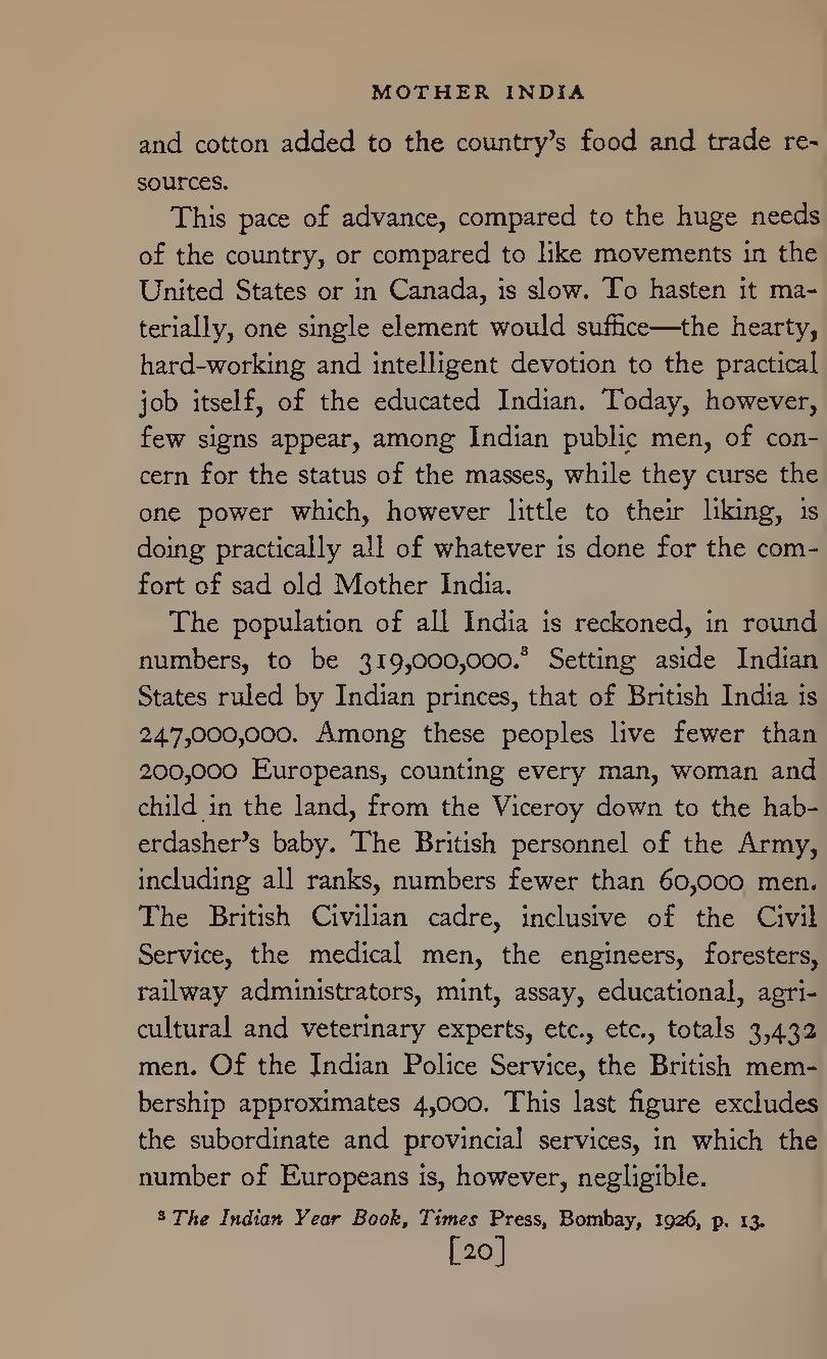MOTHER INDIA
and cotton added to the country’s food and trade resources.
This pace of advance, compared to the huge needs of the country, or compared to like movements in the United States or in Canada, is slow. To hasten it materially, one single element would suffice—the hearty, hard-working and intelligent devotion to the practical job itself, of the educated Indian. Today, however, few signs appear, among Indian public men, of concern for the status of the masses, while they curse the one power which, however little to their liking, is doing practically all of whatever is done for the comfort of sad old Mother India.
The population of all India is reckoned, in round numbers, to be 319,000,000.[1] Setting aside Indian States ruled by Indian princes, that of British India is 247,000,000. Among these peoples live fewer than 200,000 Europeans, counting every man, woman and child in the land, from the Viceroy down to the haberdasher’s baby. The British personnel of the Army, including all ranks, numbers fewer than 60,000 men. The British Civilian cadre, inclusive of the Civil Service, the medical men, the engineers, foresters, railway administrators, mint, assay, educational, agricultural and veterinary experts, etc., etc., totals 3,432 men. Of the Indian Police Service, the British membership approximates 4,000. This last figure excludes the subordinate and provincial services, in which the number of Europeans is, however, negligible.
- ↑ The Indian Year Book, Times Press, Bombay, 1926, p. 13.
